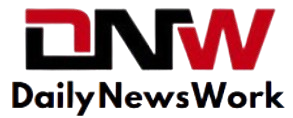In an era defined by accelerating market demands and complex global networks, supply chain efficiency has become a top strategic priority for businesses of all sizes. Traditional, manual procurement processes—laden with paper purchase orders, siloed vendor communications, and endless email chains—are proving inadequate in the face of rapid change. Enter procurement software, a suite of digital tools designed to automate, centralize, and optimize every step of the sourcing lifecycle. From identifying the best suppliers to ensuring on‑time delivery and payment reconciliation, procurement software is transforming how companies manage their supply chains.
Below, we’ll explore the key ways procurement software drives efficiency, examine essential features to look for, and illustrate how integrating procurement systems with modern payment platforms (like those offered by Kodo) can unlock even greater value.
1. Streamlining Sourcing and Supplier Management
1.1 Centralized Supplier Database
Rather than hunting through spreadsheets or disparate CRMs, procurement software provides a single repository for all supplier information—contact details, past performance metrics, contract terms, and compliance certificates. This centralization makes it easy to compare vendors side by side and reduces the risk of working with under‑qualified partners.
1.2 Automated RFx and Auctioning
Request for Proposal (RFP), Request for Quote (RFQ), and Request for Information (RFI) processes can be time‑consuming when conducted manually. Leading procurement software platforms automate RFx creation, distribution, and evaluation. Reverse auctions—where suppliers bid down prices in real time—further drive competitive rates and foster transparency.
1.3 Performance Tracking and Scorecards
With built‑in analytics, procurement teams can monitor on‑time delivery rates, quality defect incidents, and responsiveness for each supplier. Scorecards help identify top performers and flag underperformers, enabling more strategic sourcing decisions and stronger vendor relationships over time.
2. Automating Purchase Order and Invoice Workflows
2.1 Purchase Order (PO) Generation and Approval
Automated procurement software can generate POs based on predefined inventory thresholds or project requests. Multi‑level approval workflows—configured by department, spend threshold, or project code—ensure that every PO is reviewed promptly and in line with company policies.
2.2 Electronic Purchase Order Transmission
Instead of printing and physically mailing POs, the system sends electronic orders directly to suppliers. Suppliers can confirm receipt and acceptance with a click, reducing ambiguity and accelerating lead times.
2.3 Invoice Matching and Exception Handling
Invoice‑to‑PO matching is a notorious pain point in accounts payable. Procurement software automates three‑way matching—comparing invoices, POs, and goods receipt notes—to identify discrepancies immediately. When mismatches occur (e.g., over‑charges or missing receipts), the software routes exceptions to finance or procurement managers for rapid resolution.
3. Enhancing Spend Visibility and Compliance
3.1 Real‑Time Spend Analytics
Procurement software aggregates spend data across categories, departments, and suppliers into interactive dashboards. Finance and procurement leaders can drill down to transaction‑level detail, spot emerging trends, and adjust budgets or negotiation strategies on the fly.
3.2 Policy Enforcement
Configurable rule engines prevent out‑of‑policy purchases by blocking certain commodity codes, vendor categories, or unsanctioned spending limits. Automated alerts ensure that any attempt to bypass established guidelines is flagged immediately, reducing maverick buying and rogue expenditures.
3.3 Audit Trails and Regulatory Compliance
Every action—PO issuance, invoice approval, contract renewal—is time‑stamped and attributed to a specific user. This comprehensive audit trail simplifies internal reviews and helps demonstrate compliance with industry regulations, such as ISO standards or sector‑specific mandates.
4. Driving Collaboration Across Teams
4.1 Unified Communications Hub
Modern procurement software often includes built‑in messaging or collaboration modules. Stakeholders—from project managers to finance controllers—can discuss purchase orders, clarify specifications, and upload related documents in a shared workspace, cutting down on email back‑and‑forth and lost attachments.
4.2 Self‑Service Requisition Portals
Rather than routing every purchase request through procurement staff, many platforms offer user‑friendly requisition portals. Employees enter required items, desired delivery timelines, and budget codes; the system then routes approvals according to predefined rules. This self‑service model accelerates low‑value, high‑volume purchases and frees up procurement teams to focus on strategic sourcing.
4.3 Mobile Access
With mobile‑optimized interfaces, stakeholders can approve POs, review supplier proposals, and track shipments from anywhere. This flexibility proves invaluable for organizations with remote offices, field teams, or time‑sensitive procurement needs.
5. Integrating Procurement with Payments for End‑to‑End Efficiency
While procurement software excels at streamlining sourcing and ordering, its true power emerges when paired with modern payment solutions. By linking with digital payment platforms—such as the vendor payment and UPI tools offered by Kodo.com—organizations can achieve a seamless end‑to‑end procure‑to‑pay workflow.
5.1 Automated Invoice Payment
Once invoices are matched and approved, procurement systems can trigger payment execution directly through integrated banking or UPI rails. This eliminates the need for manual data re‑entry into banking portals and reduces the risk of human error.
5.2 Virtual Card Issuance for Suppliers
Some suppliers may not accept traditional bank transfers or have strict payment terms. Integration with platforms that support virtual corporate cards (like those available via Kodo Pay) allows procurement teams to issue single‑use cards tied to the exact invoice amount. This ensures on‑time vendor payment while maintaining strict budget controls.
5.3 Bulk Payout Processing
For organizations with large supplier ecosystems, handling hundreds or thousands of UPI transfers manually is untenable. By connecting procurement software to a bulk payout engine, finance teams can upload vendor payment files and execute mass disbursements in minutes—complete with automated reconciliation back into the procurement system.
5.4 Enhanced Cash‑Flow Management
Real‑time visibility into both purchase obligations and disbursement schedules empowers CFOs to forecast cash‑flow needs more accurately. Early‑payment discounts can be systematically applied where beneficial, and working capital can be optimized across the enterprise.
6. Key Features to Evaluate in Procurement Software
When selecting a procurement software solution, consider these critical capabilities:
| Feature Category | What to Look For |
| Supplier Management | Centralized database, performance scorecards |
| RFx Automation | Template libraries, reverse auction support |
| PO & Invoice Workflows | Three‑way matching, threshold‑based approvals |
| Spend Analytics | Real‑time dashboards, ad‑hoc reporting |
| Policy Controls | Configurable rule engines, exception routing |
| Collaboration Tools | In‑platform messaging, document sharing |
| Mobile & Self‑Service | Responsive mobile apps, requisition portals |
| Integration & APIs | ERP/accounting connectors, payment platform APIs |
A solution that excels in these areas will not only streamline procurement tasks but also lay the foundation for an agile, data‑driven supply chain.
7. Real‑World Impact: Savings and Strategic Gains
Organizations that implement robust procurement software often realize significant benefits:
- 20–30% Reduction in Procurement Cycle Time
Automated RFx, PO generation, and approvals accelerate sourcing and ordering, reducing lead times and improving project delivery. - 15–25% Lower Purchase Prices
Transparent bidding and reverse auctions foster competition among suppliers, driving down costs. - 40–50% Fewer Invoice Discrepancies
Automated matching catches errors early, minimizing dispute resolution effort and late‑fee penalties. - 30–40% Reduction in Maverick Spend
Policy‑driven controls and user‑friendly requisition portals steer employees toward approved vendors and negotiated contracts. - Improved Supplier Relationships
Faster, more predictable payments—enabled by integrated payment platforms—build trust and open doors to volume discounts or priority service.
These operational efficiencies translate into tangible financial gains and enable procurement teams to shift from tactical order‑processing roles to strategic business partners.
8. Best Practices for Successful Adoption
To maximize ROI on procurement software, follow these implementation guidelines:
- Conduct a Process Audit
Map current sourcing, ordering, and invoicing workflows. Identify bottlenecks, manual handoffs, and data inconsistencies. - Set Clear Objectives
Define success metrics—cycle‑time reduction, compliance rates, cost savings—and align stakeholders around these goals. - Configure Thoughtfully
Leverage out‑of‑the‑box templates for RFx and PO workflows, but customize approval hierarchies and policy rules to match your organization’s structure. - Integrate Early
Connect with ERP, accounting, and payment systems (such as Kodo’s UPI and virtual card APIs) before go‑live to ensure end‑to‑end data flow. - Pilot with a Key Category
Choose a high‑volume, moderately complex spend category (e.g., IT hardware or marketing services) to validate processes and gather user feedback. - Train and Empower Users
Provide role‑based training sessions and quick‑reference guides for procurement staff, approvers, and requestors. Encourage adoption through ongoing support. - Monitor and Optimize
Review dashboards and scorecards regularly. Tweak rules, renegotiate contracts, and identify new opportunities for process automation.
Conclusion
In a world where supply chain resilience and speed are paramount, procurement software for businesses has emerged as a critical enabler of operational excellence. By automating sourcing, purchase orders, invoices, and compliance checks—and by integrating seamlessly with modern payment platforms like those from Kodo—organizations can centralize their procure‑to‑pay processes, drive cost savings, and unlock strategic value.
As you evaluate procurement software solutions, prioritize platforms that offer robust supplier management, automated RFx capabilities, policy‑driven workflows, and deep integration with your financial ecosystem. With the right tools and a disciplined implementation approach, procurement teams can transform from transactional order‑processors into strategic advisors, guiding their companies toward greater efficiency, transparency, and competitive advantage—all powered by intelligent, end‑to‑end digital workflows.









